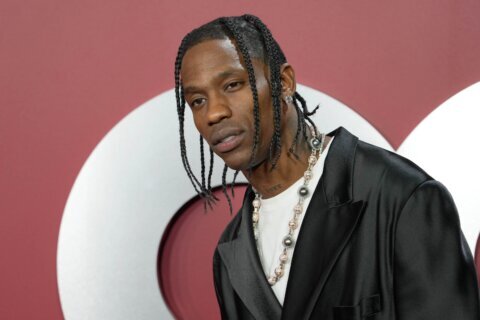For Andrew Hammond, a Scotsman and the historian and curator of the International Spy Museum in D.C., the loss of iconic actor Sean Connery this week at the age of 90 hits particularly hard.
“As a Scot, someone from the same country, it’s a great loss and a deep loss,” Hammond told WTOP on Saturday. “For spy fans and people who are from Scotland, but also for anyone who’s ever loved having the lights out and escaping through the lens of cinema, it’s just a great loss.”
James Bond movies, Hammond said, have taught lots of people what they know about being a spy, even if many of them are pure fantasy.
Connery played Ian Fleming’s James Bond character in seven films, starting with “Dr. No” in 1962. The 6-foot-2, rakishly handsome former soccer player, epitomized the role, according to Hammond.
“For me, Sean Connery was to James Bond what Abraham Lincoln was to the American President,” Hammond said. “He set the stage for everything else.”
But, Hammond advised, Connery’s version of James Bond, while built for the big screen, wouldn’t have been a good real-life spy.
“A devastatingly handsome, 6-foot-2 Scot, who drives flashy cars, not so great at blending into the background,” Hammond said, noting that a more accurate depiction of a spy came from John le Carre, who wrote about George Smiley.
“Sean Connery, he was across-the-room handsome,” Hammond said. “As a spy, quite often, you have to blend in. You have to be plain, you don’t want attention brought to you. So someone like Smiley was a more realistic spy.”
But, Fleming, who penned the novels and created James Bond was a former intelligence officer, so some of the stories hold up to real life.
“The ex-head of MI6 said the only real thing James Bond had in common with real spies was a love of gadgets and a fierce passion to defend Great Britain. That’s where he said the reality and fiction parted,” Hammond added.
WTOP’s entertainment editor, Jason Fraley offered an appreciation of Connery’s work beyond the Bond character, writing:
Not only was he a box-office sensation, he was an accomplished performer for the biggest directors of all time, including Alfred Hitchcock in “Marnie” (1964), John Huston in “The Man Who Would Be King” (1977) and Sidney Lumet in “Murder on the Orient Express” (1974).
After a cult classic in the fantasy-action flick “Highlander” (1986), he won his long overdue Oscar in Brian De Palma’s gangster flick “The Untouchables” (1987), helping Kevin Costner take down Robert De Niro’s Al Capone.
When Steven Spielberg and George Lucas needed someone to play Harrison Ford’s father, they turned to Connery for the mega hit “Indiana Jones and the Last Crusade” (1989), joining Indy on an adventurous quest for the Holy Grail.
Hammond agreed: “It’s a great loss across the board,” he said.
WTOP’s Mike Murillo contributed to this report.








